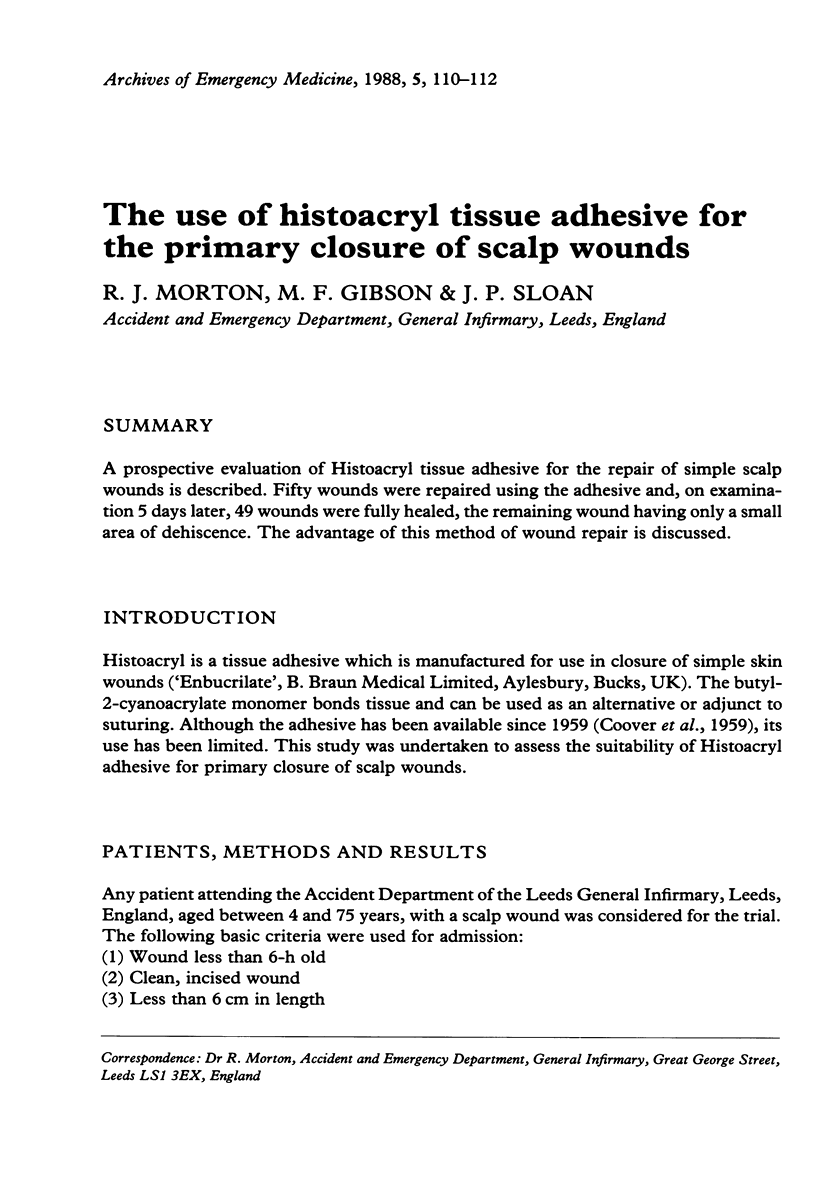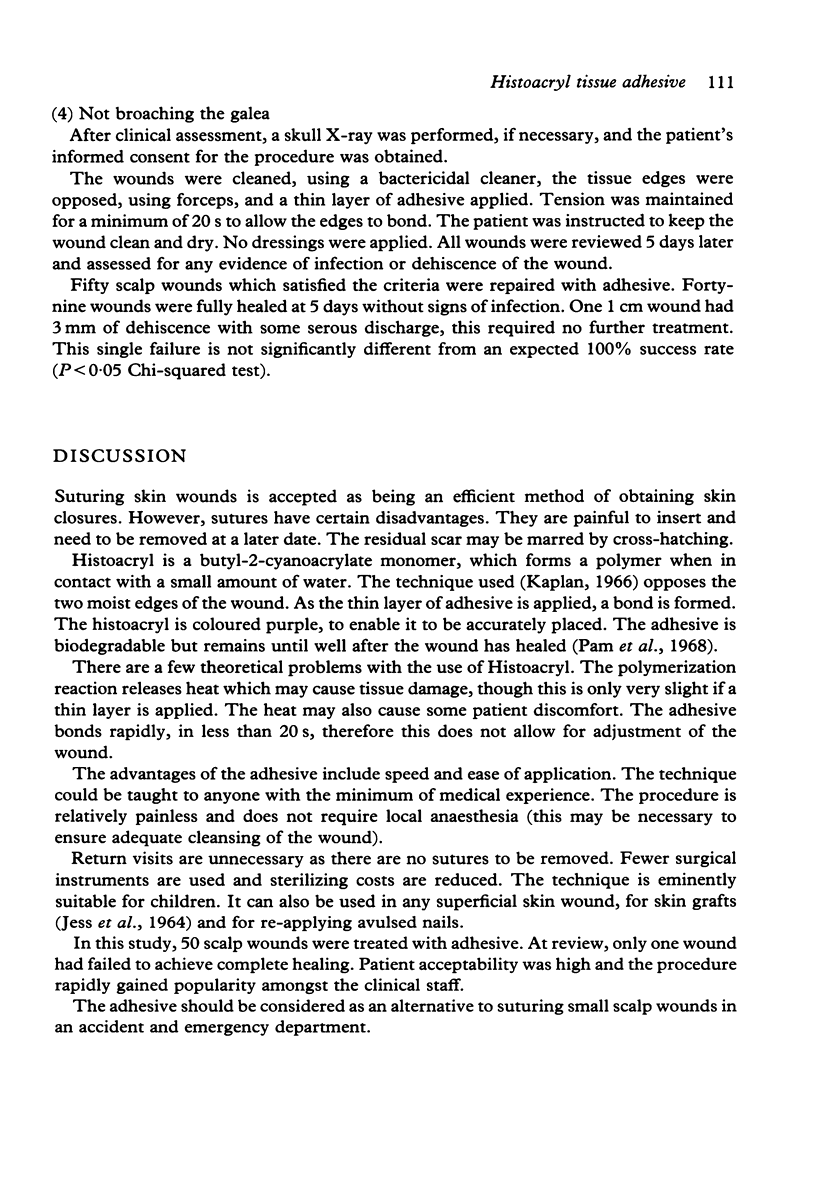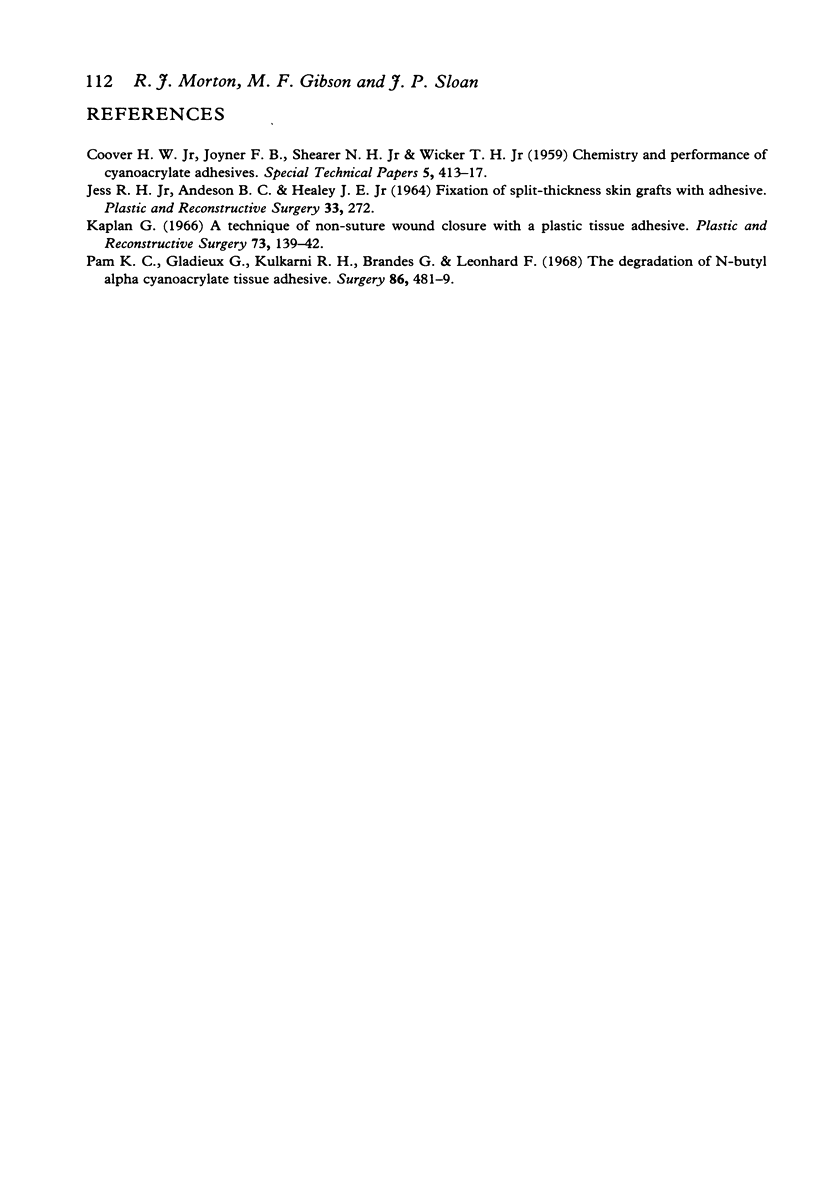Abstract
A prospective evaluation of Histoacryl tissue adhesive for the repair of simple scalp wounds is described. Fifty wounds were repaired using the adhesive and, on examination 5 days later, 49 wounds were fully healed, the remaining wound having only a small area of dehiscence. The advantage of this method of wound repair is discussed.
Full text
PDF


Selected References
These references are in PubMed. This may not be the complete list of references from this article.
- JESSE R. H., Jr, ANDERSON B. C., HEALEY J. E., Jr FIXATION OF SPLIT-THICKNESS SKIN GRAFTS WITH ADHESIVE. Plast Reconstr Surg. 1964 Mar;33:272–277. doi: 10.1097/00006534-196403000-00012. [DOI] [PubMed] [Google Scholar]
- Kaplan G. A technique of nonsuture wound closure with a plastic tissue adhesive. Plast Reconstr Surg. 1966 Feb;37(2):139–142. [PubMed] [Google Scholar]
- Pani K. C., Gladieux G., Brandes G., Kulkarni R. K., Leonard F. The degradation of n-butyl alpha-cyanoacrylate tissue adhesive. II. Surgery. 1968 Mar;63(3):481–489. [PubMed] [Google Scholar]


